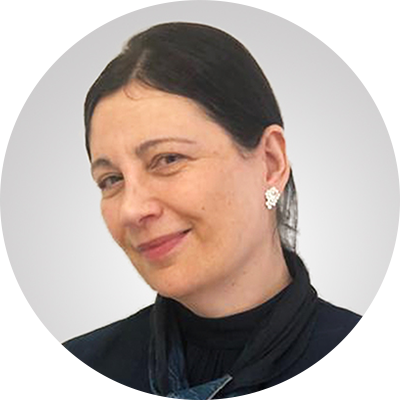
(Dmytro Buianskyi / Shutterstock.com)
Which language do you speak at home? It’s probably the language of the country you live in, or perhaps your family communicates in the mother tongue of the country they came from, before they moved to their adopted country. But for a small but growing minority in Louisiana, the US, it’s also a revived local Creole tongue, Kouri-Vini.
Next-gen speakers are driven to become fluent in Kouri-Vini to pay tribute to a rich heritage and identity, proud to cultivate an endangered native language passed down orally, but one that already secured its first online guide in 2016.
Kouri-Vini’s history and revival
In the early eighteenth century, newly-enslaved people combined their native West African languages and the French that colonialists communicated in on the Louisiana plantations they labored on. Over time, their “pidgin language” became organized, and spread to the broader population, reports reports the BBC as part of its “Rediscovering America” series. .
Today, the language has a reported 6000-9000 speakers, but at the beginning of the 20th century, it was spoken by most of the Creole population in the 22-parish region of south-west Louisiana known as Acadiana. This language predates the arrival of the Cajuns from Nova Scotia in 1755, despite the area often being called “Cajun Country,” The Historic New Orleans Collection shares.
Meanwhile, Kouri-Vini has recently shed its inferior language image, a perception due, in part, to a nationwide Americanization effort in the US to unite various ethnic groups in Louisiana under the English language, and prohibit native tongues starting in the 1920s, as reported by The Historic New Orleans Collection.
Linguist Oliver Mayeux, the son of a Louisiana Creole, is a devoted supporter of Kouri-Vini’s resurgence. For him, it is an expression of the resilient culture of formerly-enslaved people: "The genesis of a new language on the plantations of colonial Louisiana is testament to the fact that those enslaved people were just that, people. People with their own culture and traditions, hopes and dreams," reports the BBC.
This rebirth is facilitated by organizations like the nonprofit, C.R.E.O.L.E., Inc. As part of its mission to preserve and promote the Creole culture of Southwest Louisiana, it offers conversation classes in Kouri-Vini. Louisiana Historical and Cultural Vistas, a business promoting the growth of Kouri-Vini, also offers classes that are popular with young people who grew up hearing the language of their elders, and want to become fluent, like them.
A rebirth inspired by a rich history and enthusiastic ambassadors
Thanks too to a new generation of musicians committed to reviving the language, more Louisiana locals are speaking in Kouri-Vini, whose name, this article reveals, “comes from the Creole pronunciation of the French verbs "courir" (to run) and "venir" (to come).” These musicians and their audiences want to celebrate and reclaim their heritage at a time when identity and diversity are becoming more meaningful to many.
This BBC article profiles Cedric Watson, a self-appointed ambassador of Creole culture and language, and a star of upbeat contemporary American Zydeco music who also sings in Kouri-Vini. Zydeco is distinctive in its syncopated percussive sounds, reflecting its African American and Afro-Caribbean roots. It is the traditional music of Louisiana Creoles of color.
Jonathan Mayers, another ambassador, is an artist working in Baton Rouge, Louisiana’s capital, and was also the region’s 2023-2022 poet laureate, 225 Magazine reports. Mayers mastered French and the Louisiana Creole language, Kouri-Vini, as part of what he sees as his role as a cultural activist, and also due to the fact that his grandmother and great-grandmother were speakers.
“Mayers’ enthusiasm for Kouri-Vini, and for multilingualism in general, is apparent in his daily life. His outgoing voicemail message is in Kouri-Vini. His website tabs are in Kouri-Vini and English,” 225 Magazine reports. Mayers believes that his work of preserving the languages that took shape during the fusion of African enslaved people, exiled Acadians from Canada and European colonizers, allows for a better understanding of the area’s collective culture.
Now on an app!
As Google Arts & Culture reports, the Woolaroo open source section of its app is a tool enabling language communities to preserve and expand the vocabulary and reach of their endangered indigenous languages. One of the ways this is done is to expand the language to cover modern terms, helping make it more relevant for next-gen speakers.
“Woolaroo is open source and allows language communities like ours to preserve and expand their language word lists and add audio recordings to help with pronunciation. Today it supports 10 global languages including Louisiana Creole, Calabrian Greek, Māori, Nawat, Tamazight, Sicilian, Yang Zhuang, Rapa Nui, Yiddish and Yugambeh. Any of these languages are an important aspect of a community’s cultural heritage,” its website explains.
YOU MIGHT ALSO LIKE:
Pet Dogs Can Tell Their Owner’s Language Apart From Foreign Ones!
The Longest Word in the World is 183 Letters Long!
Now Anyone can Learn to Speak High Valyrian







